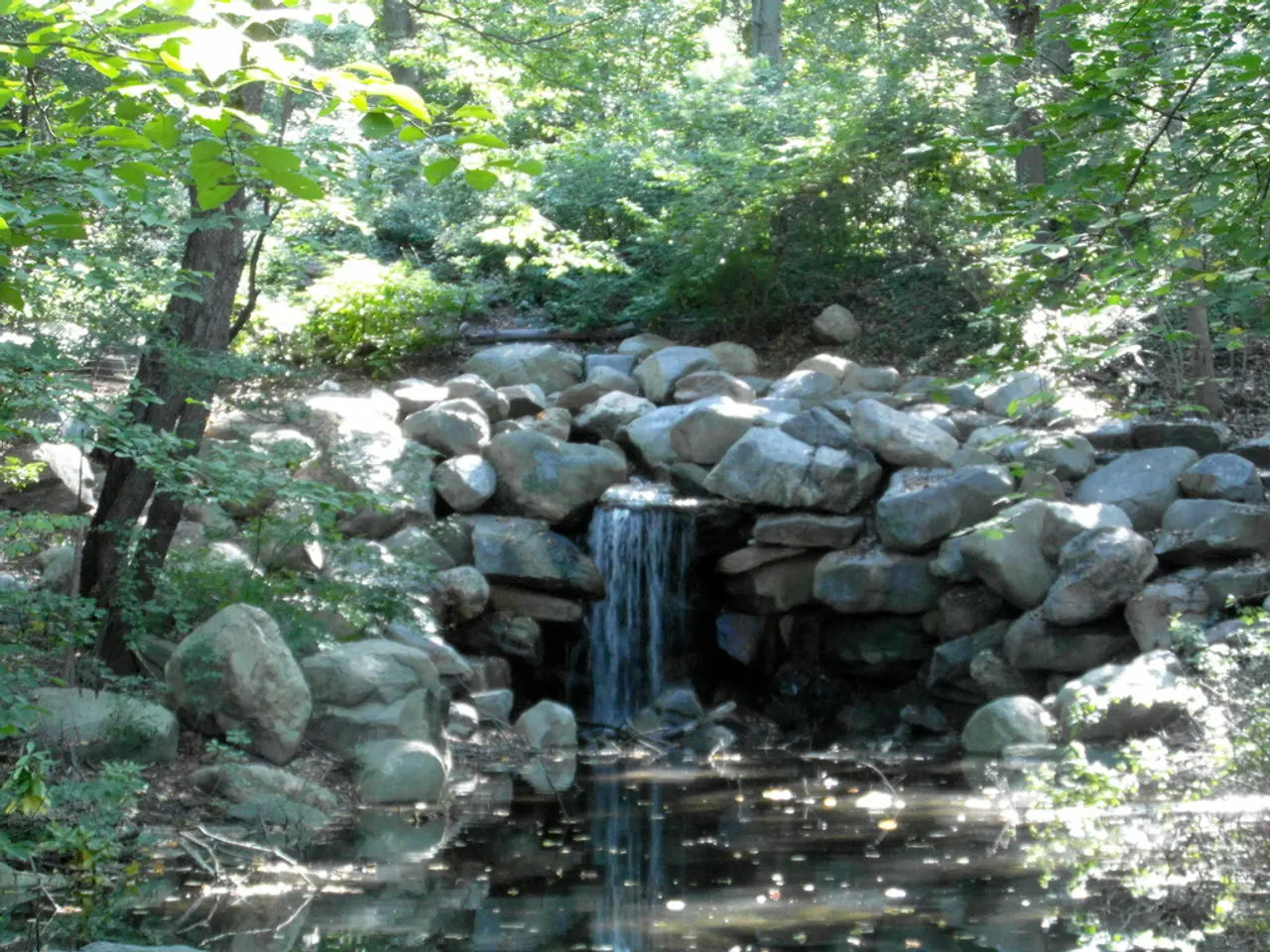Determining Groundwater Allocation: A Closer Look - Groundwater Allocation Strategies Revealed
In the heart of Bavaria, Germany, the commercial extraction of groundwater is subject to stringent regulations, as demonstrated by the town of Treuchtlingen. These controls are designed to protect water resources and ensure their long-term availability.
The Water Protection Areas, established by district authorities via ordinance, safeguard essential water extraction points such as wells and springs. These areas limit or regulate groundwater extraction activities to prevent contamination and overuse.
In Treuchtlingen, a company named Altmuhltaler has decided to primarily extract groundwater from a different layer - the iron sandstone - in the future. With newly constructed wells, the mineral water producer aims to extract up to 200,000 cubic meters per year. However, overexploitation of the covered sandstone Keuper formation has been reported, and the company initially planned to extract a maximum of 50,000 cubic meters per year from this source.
The Water Cent Law (Wassermengengesetz) in Bavaria implements specific regulations on groundwater use. This law requires permit applications for significant water withdrawal activities, compliance with water protection area regulations, and potential restrictions or fees related to sustainable water use. It also mandates continuous environmental monitoring and possible adaptation of extraction volumes based on aquifer conditions.
The law underpins administrative decisions on groundwater extraction, ensuring ecological balance is maintained. In Treuchtlingen, these regulations are crucial in balancing economic use with ecological protection and public interest. The city of Weißenburg, the municipalities of Alesheim and Ettenstatt, and various water supply associations also draw water from this source. The Gnotzheim group plans to extract up to 285,000 cubic meters per year (previously 325,000) from the covered sandstone Keuper formation in the future.
Other water suppliers are currently preparing their applications for future groundwater extraction. Decisions on these applications are expected to be made as soon as possible, preferably by the end of the year. The law in Bavaria will implement a uniform fee of ten cents per cubic meter for groundwater extraction. The debate on the water cent law is expected to resume after the summer break of the state parliament from early October.
The regulatory framework in Bavaria aims to ensure that commercial groundwater extraction like in Treuchtlingen does not compromise the ecological integrity and availability of groundwater resources. The Water Cent Law and local water protection ordinances form the backbone of these regulations, guiding principles of sustainability, public health protection, and legal compliance.
- The community policy in Treuchtlingen, seeded in the Water Cent Law (Wassermengengesetz) of Bavaria, emphasizes the need for environmental monitoring and potential adaptation of extraction volumes based on aquifer conditions for groundwater use.
- In line with policy-and-legislation concerning climate-change and environmental-science, the company Altmuhltaler is required to comply with water protection area regulations and submit permit applications for its groundwater extraction activities.
- The employment policy in the surrounding municipalities, such as Weißenburg, Alesheim, Ettenstatt, and various water supply associations, is influenced by the long-term availability and ecological protection of groundwater resources, as dictated by the policy-and-legislation on policy-and-legislation on water resources management.






